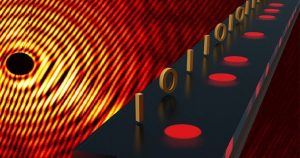
Scientists Discover The New Way Of Data Storage In Fast-Moving Magnetic Particles Bypassing Moore’s Law
Data Storage has become one of the most prominent subjects with the advent of super technical devices and extremely advanced requirements in the field of science and technology.
Amidst the everyday advances in this field, the researchers from the Massachusetts Institute of Technology (MIT) are exploring a new system for data storage based on tiny eddies in magnetic fields, virtual particles known as “skyrmions”, which has already given in the positive outcomes.

Coming to the facts, the skyrmions are stable despite external disturbances and can be used to store data with more density than conventional magnetic storage devices. Unlike the individual poles used in conventional magnetic storage devices, the data can be stored in an area just a few atoms across, which is quite negligible.
The implications of the study allow for bypassing the physical limits of data storage on conventional magnetic storage devices. The data density of conventional storage devices has been improving at a steady rate for decades, but now is approaching the limits of how much data can be physically stored. Here, in this case, the data storage density can be improved not only for hard disks but also for RAM chips.

Researchers have figured out that the skyrmions can be pinned to a surface by introducing tiny defects in a magnetic layer, that is sandwiched very close to another layer of a non-magnetic heavy metal, they are now investigating ways to easily read the data, that can be implemented in conventional computer systems.
As of now, the data can currently be read using an expensive X-ray spectrograph, and adding an X-ray lens to a reading head may cost as much as $50,000 per lens. A possible solution is adding another textured layer of metal, and measuring the electrical resistance of the textured layer to detect the presence of skyrmions in the adjacent layer.

All these new findings are reported this week in the journal Nature Nanotechnology, in a paper by Beach, MIT postdoc Felix Buettner, and graduate student Ivan Lemesh, and 10 others at MIT and in Germany.
On a note, the team also included researchers at the Max Born Institute and the Institute of Optics and Atomic Physics, both in Berlin; the Institute for Laser Technologies in Medicine and Metrology at the University of Ulm, in Germany; and the Deutsches Elektroniken-Synchrotron (DESY), in Hamburg.